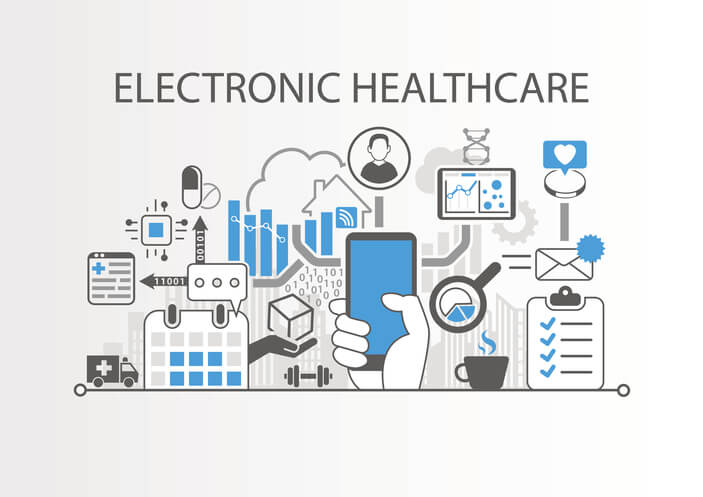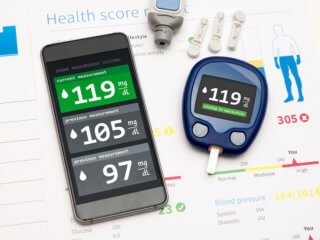eHealth has the transformative potential as a tool to serve the patient population in the developing world. The power of a properly developed Health IT solution to advance patient care cannot be underestimated. mHealth market was valued at USD 11.47 billion in 2014 and is expected to reach USD 102.43 billion by 2022, growing at a CAGR of at 32.5% between 2016 and 2022.
But, these technologies should be deployed and implemented in such a way that they are appropriate for the population they are trying to serve. Health IT solutions should be technologically appropriate, take into account health ecosystem and encourages collaboration between government, corporate houses, research centers and other non-governmental organizations.
How is International Trade Administration promoting health IT solutions?
International Trade Administration looks for creative solutions to increase technology adoption and export of medical goods and services. It strives to create an enabling environment where businesses can meet the increasing demand for the newest and most innovative technologies in the market with the ultimate goal of delivering best health care services worldwide.
ITA supports these endeavors through three broad mechanisms. It provides market intelligence to support their market entry strategies and help the businesses make informed choices about what to develop and use their innovation. It provides modern market analytics of 27 sectors including pharmaceuticals and medical devices to aware different stakeholders of various investment opportunities. The association convenes all the interested parties to understand latest market needs and trends through round table discussions and also supports bilateral negotiations with other countries.
This trade association collaborates with government and industry stakeholders to promote best practices for technology development, regulatory approvals, clinical trials.
| Recommended for you | |
| Innovation in mhealth technology: Serving patients and citizens | |
| Digital health revolution across Europe | |
| Will China become the world’s leading AI industry? |
eHealth: The need of the hour in China
Big medical devices’ company encountered a lot of challenges while applying the same business model in developing country that was implemented in developed countries.
The average population growth in China has been recorded to be around 15-30% over the past five years. China has opened large hospitals with bed capacity of over 7000 which serve 10,000 patients per month. It requires Millions of dollars to put in place the infrastructure for 7000-bed hospitals.
This enormous population needing health care offers tremendous organizational challenges for the government which can only be solved through the use of digital health technology. Scalability and interoperability are two major challenges for eHealth companies. There should be a free flow of data across the country.
Regulations and standards are required to be set before companies can start using Health IT solutions that were developed for one market, in a different market. If there are no data standards, it becomes a very costly proposition to implement eHealth solutions.
How is IoT revolutionizing the cold chain?
Africa has been able to adopt digital technology at an alarming rate because of the necessity in the country. Africans have developed a solution to monitor your temperature sensitive assets.
Beyond Wireless is the global leader in remote temperature monitoring solutions. Our technology positively impacts people, communities, and entire economies through its applications in global health, agriculture, and food retail. It provides an easy to deploy, easy to use cloud-based cold chain management solution that ensures users have constant visibility of your temperature sensitive assets like vaccines and insulin and equipment anywhere around the world. If the cold chain is broken, then this technology sends email and SMS to all the stakeholders regarding the state of the cold chain.
There are some challenges that the developers faced while deploying such a solution which included lack of skilled workers, lack of reliable power supply in remote locations and power surge which can damage the monitoring device. They solved power related problems by integrating a technology which does not require the device to recharge or need external power for around ten years.
It was developed in Africa and is being deployed around the world in more than 54 countries. It is affordable, easy to use a solution which has helped in radically improving the cold chain system and lives of its users. This technology has helped governments save around 9 Billion USD per year in global immunization sector by continuous monitoring of vaccines.
African countries have had a resounding success in implementing few digital health technologies. Other countries like China, India, and the middle east need to follow the footsteps of the developed economies to integrate ICT with health care to provide better health care services to its citizens.
| Technologies | Problems addressed |
|---|---|
| Internet of Things(IoT), Remote temperature monitoring | Cold chain management, remote temperature monitoring of temperature sensitive vaccines and insulin |
Moderation: Dr. Nikolaus Schumacher, Vorstand Amref Health Africa Deutschland / CEO LIFEPATCH GmbH
Speakers:
Anita Shukla, Senior Advisor BVMW Indien
Horst Merkle, Vice President Continua Health Alliance / Director Information Management Systems Diabetes Care, Roche Diagnostics Corporation
Jennifer Boger, Team Lead, Health Team, Office of Health and Information Technologies, U.S. Department of Commerce
Ian Lester, founder, and CEO of Beyond Wireless, South Africa
Video URL: https://www.youtube.com/watch?v=b4Gqf23V938&index=13&list=PL98iSagl_rnIwKONL-dQmj9Y1mOGAjvW8
Upload Date: 27th November 2016
Video code: 16R205
International Trade Association
Image credit: www.istockphoto.com

















